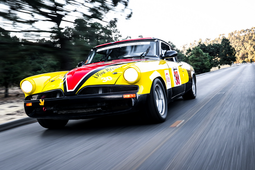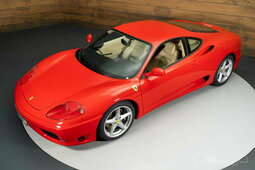The Allure of Lamborghini: A Journey from Miura's Grace to Countach's Futurism
Lamborghini models captivate everyone, even those not typically enamored with sports cars, with their distinctive allure. Ranging from the Miura, embodying the elegance of a gazelle, to the avant-garde Countach marked by its sleek, cutting-edge design, each vehicle sporting the iconic raging bull logo shares a common thread of being extravagant, exotic, and boldly expressive. The Lamborghini Espada stands as a testament to this legacy, presenting itself as an exceptionally unique model that might evoke diverse opinions due to its singular extravagance.
Lamborghini Espada: The Embodiment of Tradition and Innovation in a Four-Seat GT
In 1968, Lamborghini unveiled the Espada, its inaugural four-seat GT, continuing its tradition of evocative names linked to corrida, toreadors, and raging bulls, with "Espada" translating to "sword" in Spanish. The car's distinctive design was the brainchild of Marcello Gandini of Bertone, the famed designer responsible for the Miura and Countach's aesthetics. While the Miura and Countach are often hailed as among the most visually stunning Lamborghinis, the Espada's four-seat coupé design garners acclaim for its bold and sensational style. However, it also invites a spectrum of descriptions, ranging from intriguing and unconventional to, perhaps, uniquely unorthodox.
The aesthetic of the Espada was influenced by another Gandini masterpiece – the Lamborghini Marzal concept, showcased at the 1967 Geneva Motor Show with its striking glazed gull-wing doors. Although these distinctive doors didn't make it to the final Espada production model, it inherited several design elements from the Marzal: the wedge-shaped front, the expansive convex windshield, horizontal rear wheel arches, and a gently sloping roofline that creates a high rear profile, further accentuated by the low line of the windows. This unique blend of features resulted in a profile with not-so-conventional proportions, turning heads and stirring emotions. Just as it's a thin line between love and hate, the Espada, initially perceived as a mishmash of ideas and lines, could suddenly be viewed as an automotive marvel, a testament to Bertone's brilliance in the eyes of an onlooker.
While opinions on the Espada's exterior design might spark endless debates, its interior is unquestionably captivating, even to the most critical eyes. The Espada S1 featured an opulent cabin, complete with four large leather seats that resembled plush armchairs, distinct octagonal frames for the speedometer and tachometer, and an impressively large, slightly convex steering wheel that promises a delightful grip from the driver's seat. This first-generation model exemplified luxury in a minimalist fashion, combining comfort and elegance in its interior design.
Throughout its decade-long production, the most notable evolution in the Lamborghini Espada was its interior trim design. The second series introduced a dashboard and trim adorned with wood, enhancing its luxurious feel. In the S3, the driver's area was transformed into a cockpit-like space. Here, the dials and most instruments, including the radio, were conveniently positioned on the dashboard beside the steering wheel. Beyond the interior, there were significant updates to the Espada's functionality. The S2 model, released in 1970, offered optional power steering. Meanwhile, the Espada S3 provided buyers with a choice between a five-speed manual transmission or a smoother three-speed automatic, catering to diverse driving preferences.
Despite the luxurious interior and comfort designed for picturesque Italian road trips, the powerful 3.9-litre Lamborghini V12 engine in the front is an unmissable presence. This engine endows the Lamborghini Espada S1 with a robust 325 horsepower, enabling it to sprint to 100 km/h in a mere 6.5 seconds and reach a top speed of nearly 250 km/h, living up to the manufacturer's esteemed reputation. The subsequent Espada S2 model further raised the stakes with an upgraded output of 350 horsepower, enhancing its performance capabilities even further.
The price of Lamborghini Espada
From 1968 to 1978, a remarkable total of 1,217 Espadas were produced, as indicated in listings here. This model not only became Lamborghini's most popular offering but also maintained its position as the top seller for the brand until the mid-1980s, when the Countach's production gained momentum. Today, acquiring an Espada is a rare opportunity – they seldom appear in advertisements, and their prices range considerably, typically falling between USD 100,000 to 200,000.
---
Discover your dream car within our Car Categories, or explore our Classic Passion Shop to uncover thrilling items from our associates!










